Empezando una nueva colección / Starting a new collection …and making off
Algunas colecciones son auténticos vampiros energéticos. En realidad todas lo son, aunque unas más que otras, porque en mi experiencia nunca he podido pasar a la siguiente sin un obligado lapso de tiempo para olvidarme de las influencias de la anterior, del proceso técnico desarrollado y así poder concentrarme en el próximo mundo que quiero hacer aparecer.
Some collections are like vampires, they seem to suck the energy from you. To tell you the truth, they all are, some more than others, because in my experience I’ve never been able to move on to the next collection without an obligated time lapse between them, this is because I need time to forget the influences of the previous collection and the technical process I developed. I need this time lapse to be able to concentrate on the next world that I want to make appear.
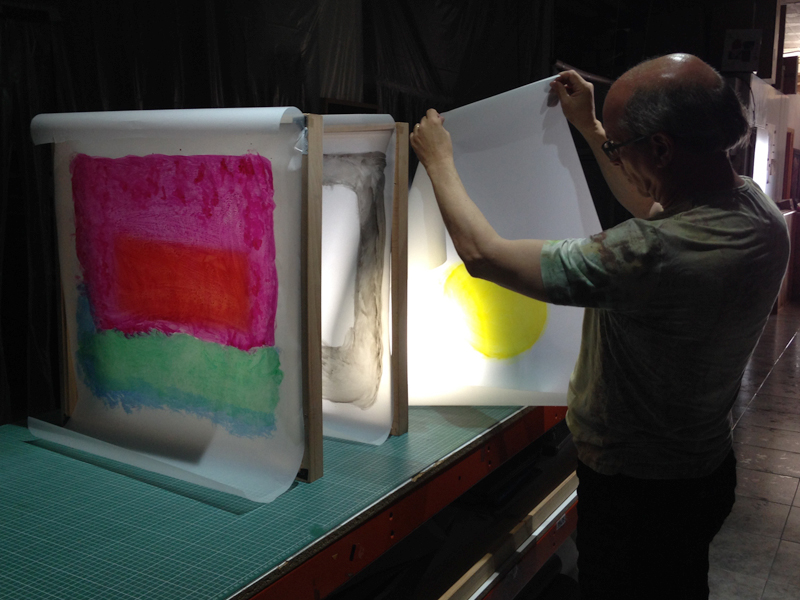 Cuando el tema y mi interés por continuar trabajando en los “Vacíos” –la segunda y última colección que hice en 2017– se agotó, necesité un par de meses para olvidarme de sus influencias, y para que el pensamiento visual en el que me había volcado durante los seis meses que me concentré en exclusiva en ella perdiera vigor. Suelo ayudarme con algo que he descubierto que es un buen aliado para borrar todo lo anterior: dedicarme a la fantasía de redactar el nuevo guión. Sin embargo las pruebas técnicas posteriores no dieron los resultados esperados y, a pesar de cambiar de escenarios y de materiales, parecía estar en un camino sin salida; lo que no es nada nuevo.
Cuando el tema y mi interés por continuar trabajando en los “Vacíos” –la segunda y última colección que hice en 2017– se agotó, necesité un par de meses para olvidarme de sus influencias, y para que el pensamiento visual en el que me había volcado durante los seis meses que me concentré en exclusiva en ella perdiera vigor. Suelo ayudarme con algo que he descubierto que es un buen aliado para borrar todo lo anterior: dedicarme a la fantasía de redactar el nuevo guión. Sin embargo las pruebas técnicas posteriores no dieron los resultados esperados y, a pesar de cambiar de escenarios y de materiales, parecía estar en un camino sin salida; lo que no es nada nuevo.
When both the subject, and my interest in working on “Vacios” –the second and last collection that I did in 2017- faded, I needed a couple of months for me to disconnect totally from the influences that invaded me, but I also needed time for the visual thoughts in which I was immersed in and had me focused on exclusively for the last six months, to lose its effect. I usually help myself with something that I have discovered as a good ally to erase all of the above: and that is to dedicate myself to the fantasy of writing the new script. However, the subsequent technical tests did not give me the results I expected and, in spite of changing scenarios and materials, I seemed to be at a dead end; which is nothing new.
 Casi seis meses después de finalizar la anterior colección no había conseguido nada positivo en qué basarme para empezar la serie. Y de pronto, por pura casualidad, vi algo que me trajo a la cabeza las transparencias del teatro chino de sombras. Consciente de que allí “había algo potente”, preparé unas pruebas y comprendí al ver el resultado que era el camino adecuado.
Casi seis meses después de finalizar la anterior colección no había conseguido nada positivo en qué basarme para empezar la serie. Y de pronto, por pura casualidad, vi algo que me trajo a la cabeza las transparencias del teatro chino de sombras. Consciente de que allí “había algo potente”, preparé unas pruebas y comprendí al ver el resultado que era el camino adecuado.
Nearly six months after concluding the previous collection I had not achieved anything positive as a base to start the series. And suddenly, by chance, I saw something that brought to my mind the transparencies of the Chinese theatre of shadows. Aware that there was “something powerful there”, I prepared some rehearsals and, I knew when I saw the results that I was on the right track.
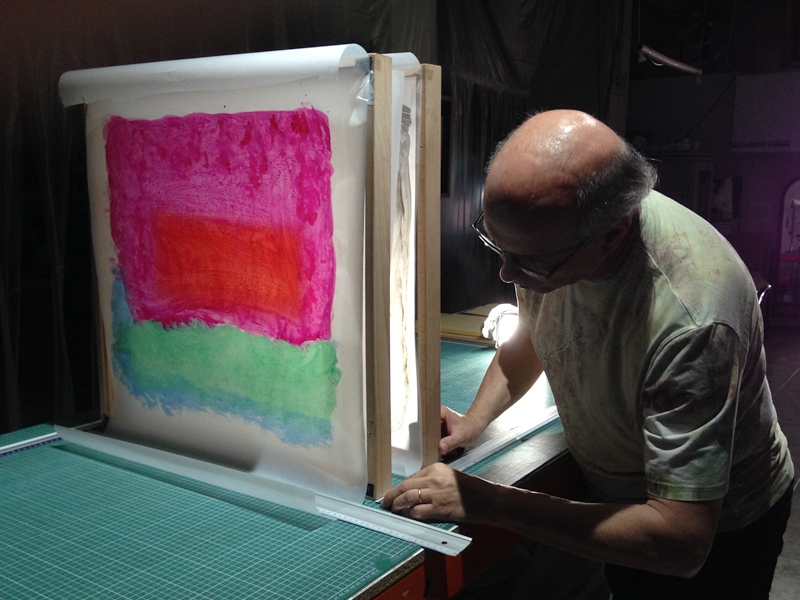 Tengo una docena de colecciones que podrían considerarse bodegones, ocho capturadas en película y cuatro en digital, y ésta, la 31, me devolvía al estudio. Las anteriores dieciséis colecciones las había hecho en exteriores, donde es difícil verme disparar las capturas seleccionadas. Al tomarme las cosas con la tranquilidad que da tenerlo todo bajo control en un lugar cerrado, también es posible seguir el proceso que me lleva desde la captura a la imagen final más fácilmente.
Tengo una docena de colecciones que podrían considerarse bodegones, ocho capturadas en película y cuatro en digital, y ésta, la 31, me devolvía al estudio. Las anteriores dieciséis colecciones las había hecho en exteriores, donde es difícil verme disparar las capturas seleccionadas. Al tomarme las cosas con la tranquilidad que da tenerlo todo bajo control en un lugar cerrado, también es posible seguir el proceso que me lleva desde la captura a la imagen final más fácilmente.
I have a dozen collections that could be considered still life, eight captured on film and four in digital, and this one, the 31st, returned me to the studio. The previous sixteen collections had been shot outdoors where it is difficult to see me shoot the selected captures. By taking things with the tranquillity you get when having everything under control in a closed place, it is also possible to follow the process that takes me from the capture of the final image more easily.
 Desde el principio, ya desde la primera colección, me he negado a conceder entrevistas para hablar, concretamente, sobre los detalles de las técnicas que uso para desarrollar las colecciones que componen mi obra personal. No entiendo por qué a un fotógrafo creativo le preguntan por su técnica, y a un escritor no le preguntan cómo controla su sintaxis, su ortografía, o qué técnica de redacción utiliza.
Desde el principio, ya desde la primera colección, me he negado a conceder entrevistas para hablar, concretamente, sobre los detalles de las técnicas que uso para desarrollar las colecciones que componen mi obra personal. No entiendo por qué a un fotógrafo creativo le preguntan por su técnica, y a un escritor no le preguntan cómo controla su sintaxis, su ortografía, o qué técnica de redacción utiliza.
Sin embargo nunca he tenido inconveniente en mostrar a mis colegas lo que estoy haciendo, ni cómo lo hago; incluso respondo dando pequeños detalles curiosos.
From the beginning, right from the first collection, I have always refused to give interviews, and to talk, specifically, about the details of the techniques I use to develop the collections that make up my personal work. I don’t understand why a creative photographer is asked about his technique, and a writer is not asked about how he controls his syntax, his orthography, or what writing techniques he uses.
Nevertheless, I have never had any trouble showing my colleagues what I am doing, nor how I do it; I even answer giving small curious details.
 Cuando a finales del mes de mayo trabajaba en las obras de la colección número 31, me visitaron para una entrevista. Todo lo que usaba en aquel momento estaba por encima de las mesas. La visita duró unas seis horas, comimos juntos y hablamos largo y tendido. La redactora pudo ver cómo estaba preparando las primeras fotos de la nueva colección y le expliqué lo que había por allí. Hizo fotos de todo lo que quiso y podrá usarlas para que se entiendan mis comentarios.
Cuando a finales del mes de mayo trabajaba en las obras de la colección número 31, me visitaron para una entrevista. Todo lo que usaba en aquel momento estaba por encima de las mesas. La visita duró unas seis horas, comimos juntos y hablamos largo y tendido. La redactora pudo ver cómo estaba preparando las primeras fotos de la nueva colección y le expliqué lo que había por allí. Hizo fotos de todo lo que quiso y podrá usarlas para que se entiendan mis comentarios.
When at the end of May I was working on collection 31, I received a visit from somebody who wanted to interview me. Everything I used then was on top of the tables. The visit lasted for six hours, we had lunch together and conversed deeply for a long time. The redactor could see first-hand how I was preparing the first photos of the new collection and I explained to her what was there. She took photos of everything she asked me to so that she could use them as an understanding of my comments.
 Al marchar me preguntó si podía escribir sobre la parte técnica de lo que había visto y le puse una condición: yo tenía que revisar el texto, pero no para eliminar lo que no quisiera que apareciese, sino para que no dijera algo inexacto. Para su sorpresa no era una censura, así que no es que me guarde mis secretos. Mi habitual negativa se debe a que una entrevista técnica exige entrar en explicaciones engorrosas que nadie o casi nadie comprenderá, y considero muchísimo más importante la explicación del por qué de mi obra fotográfica no objetual y qué es lo que puede aportar al futuro de la fotografía creativa este camino abierto. El “¿cómo lo haces?” es una pregunta lógica ante la sorpresa de unas imágenes extrañas, pero la respuesta no aporta nada que no sea confusión a lo realmente importante: la eliminación del objeto usado y su conversión en símbolo.
Al marchar me preguntó si podía escribir sobre la parte técnica de lo que había visto y le puse una condición: yo tenía que revisar el texto, pero no para eliminar lo que no quisiera que apareciese, sino para que no dijera algo inexacto. Para su sorpresa no era una censura, así que no es que me guarde mis secretos. Mi habitual negativa se debe a que una entrevista técnica exige entrar en explicaciones engorrosas que nadie o casi nadie comprenderá, y considero muchísimo más importante la explicación del por qué de mi obra fotográfica no objetual y qué es lo que puede aportar al futuro de la fotografía creativa este camino abierto. El “¿cómo lo haces?” es una pregunta lógica ante la sorpresa de unas imágenes extrañas, pero la respuesta no aporta nada que no sea confusión a lo realmente importante: la eliminación del objeto usado y su conversión en símbolo.
When she was about to leave, she asked me if she could write about the technical side of what she had just seen, and my only condition was: that I could revise the text, not for eliminating what I did not want to show, but just so that she didn’t write what was inexact. To her surprise, this was not a ban, so you see, I don’t really keep my secrets. My usual refusal is because an interview on the technique of my work requires entering into some cumbersome explications that nobody or almost nobody will understand, and I consider it much more important to explain the ‘why’ of my non-objectual photographic work and what this open path can contribute to the future of creative photography. The “how do you do it?” is a logical question when surprised with some strange images, but the answer does not contribute anything that is not confusion to what is really important: the elimination of the object used and its conversion into a symbol.
 De la entrevista, que no se publicará en España, he seleccionado y traducido al castellano e inglés una parte que puede explicar, en cierta medida, el método de trabajo concreto de la colección que me ocupa actualmente –agosto de 2018– y también se entenderá por qué no me apetece hablar de técnica en las entrevistas:
De la entrevista, que no se publicará en España, he seleccionado y traducido al castellano e inglés una parte que puede explicar, en cierta medida, el método de trabajo concreto de la colección que me ocupa actualmente –agosto de 2018– y también se entenderá por qué no me apetece hablar de técnica en las entrevistas:
From the interview, which will not be published in Spain, I have selected and translated into Spanish and English a section that can explain, to a certain extent, the concrete work method of the collection that concerns me now-August 2018- and it will be understood why I do not want to talk about techniques in interviews:
“… Esta colección no tiene nada que ver con las anteriores, ni me recuerda a ninguna que yo conozca, y ya le he entrevistado dos veces y filmado un video sobre su trabajo. Está intentando que las texturas de las formas aparezcan a través de los colores insinuando un cruce de dimensiones.
A mí, cinco meses largos de pruebas me parecen una barbaridad, pero viéndolo entiendo los motivos.
“… This collection has nothing to do with the previous, it does not even bring to my mind any of them that I know of, and I have already interviewed him a couple of times and filmed a video about his work. What he is trying to do is to make the textures of the forms appear through the colours insinuating a crossover of dimensions.
To me, five long months of rehearsals and tests seem barbaric, but watching him I understand his reasons why.
 Ya he dicho que esto no es una entrevista sobre su técnica, así que contaré lo que vi. Pero advertiré de que quien no esté de verdad dentro del mundo de la imagen –y aún así–, puede perderse en algún momento. Valentín me ha repetido varias veces que sea didáctica o no se enterará nadie. Voy a intentarlo.
Ya he dicho que esto no es una entrevista sobre su técnica, así que contaré lo que vi. Pero advertiré de que quien no esté de verdad dentro del mundo de la imagen –y aún así–, puede perderse en algún momento. Valentín me ha repetido varias veces que sea didáctica o no se enterará nadie. Voy a intentarlo.
I already mentioned that this is not an interview on his technique, so I will just relate what I saw. But I want to warn you that whoever is not really in the world of the image- and even if one is-, may find oneself lost at some point. Valentin had repeated to me many times, it has to be didactic if not, nobody will know what is happening. I will give it a try.
 Está trabajando con una serie de marcos colocados a distancias variables uno de otro. En esos marcos coloca papel translucido coloreado en parte o por completo. El papel lo sujeta a la parte delantera y trasera, e incluso coloca dos papeles uno encima de otro. En los marcos traseros repite la colocación de papeles. Todo ello está iluminado por detrás con luz led fotográfica, de modo que la imagen que se está montando se ve desde la parte delantera por transparencia. Para conseguir el efecto de color y textura que busca, acerca o separa los marcos entre sí, de modo que los planos varían el nivel de foco a su gusto. A veces sujeta una parte de un papel en un marco y otra parte en otro marco, con lo que el papel no queda plano, sino diagonal. Todo ello es necesario para su “cálculo de integración” –esto me lo ha dicho tal cual–.
Está trabajando con una serie de marcos colocados a distancias variables uno de otro. En esos marcos coloca papel translucido coloreado en parte o por completo. El papel lo sujeta a la parte delantera y trasera, e incluso coloca dos papeles uno encima de otro. En los marcos traseros repite la colocación de papeles. Todo ello está iluminado por detrás con luz led fotográfica, de modo que la imagen que se está montando se ve desde la parte delantera por transparencia. Para conseguir el efecto de color y textura que busca, acerca o separa los marcos entre sí, de modo que los planos varían el nivel de foco a su gusto. A veces sujeta una parte de un papel en un marco y otra parte en otro marco, con lo que el papel no queda plano, sino diagonal. Todo ello es necesario para su “cálculo de integración” –esto me lo ha dicho tal cual–.
He is working on a series of wooden frames collocated one behind the other at different distances. On these frames, he sticks thin transparent paper from corner to corner. The paper is placed on the front and the back of the frame. He even places two transparent papers, one on top of the other. On the frames, at the back, he repeats this operation. All this is illuminated from behind with photographic led light so that the image that is being mounted can be seen from the front by transparency. To achieve the effect of the colour and texture he is looking for, he moves the frames closer to each other or separates them more from each other, so that the scene varies the level of focus to his liking. Sometimes he will fold a part of the paper in one frame and do the other part in the next frame so the paper is not flat, but diagonal. All this is necessary for his “calculation of integration”; -quoting his exact words-.
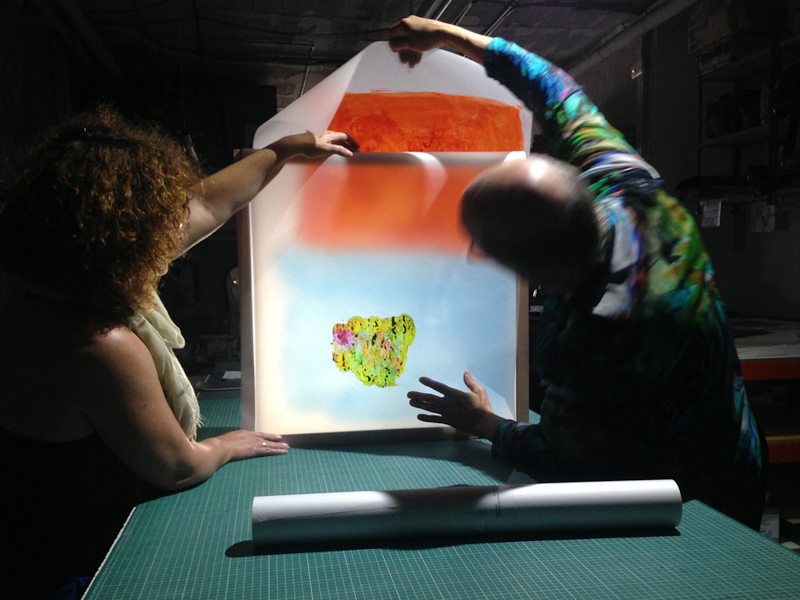 Los colores cambian cuando se suman por transparencia, así que cuando colorea el papel, hace un dibujo de lo que necesita para no equivocarse con el resultado en una zona.
Los colores cambian cuando se suman por transparencia, así que cuando colorea el papel, hace un dibujo de lo que necesita para no equivocarse con el resultado en una zona.
Para asegurarse de que los colores que emplea son reproducibles, usa las propias tintas del plotter como colorante. ¡Se imprimen seguro!
Para capturar esos colores correctamente, él mismo calibra la cámara usando una carta Gretag-Macbeth. Lo hace a mano y los valores son sorprendentemente exactos.
Para saber el nivel máximo de valores de grises y saturación que puede conseguir de cada color y sus mezclas, ha hecho una escala donde se ve el límite posible con el perfil de salida del papel. Dice que como lleva el color al punto crítico, si se pasa pierde toda la información porque se satura de golpe, así que se ha visto obligado a comprobar ese dato por adelantado. Si se pasa –dice–, no hay forma de recuperarlo en el editor de imagen.
Él mismo hace el perfil de salida del papel para asegurarse de que es exacto.
The colours change when they are added by transparency, so when he colours the paper, he makes a drawing of what he needs to help him avoid making mistakes with the result in a certain area. To make sure that the colours he uses are exactly reproducible, he uses the plotter’s own inks as a dye. Sure, they will print well.
To capture these colours correctly, he calibrates the camera himself by using a Gretag-Macbeth colour checker. He does it by hand and the values are surprisingly accurate. To know the maximum level of values of the greys and the saturation that he can get from each colour and its mixtures, he made a scale where you see the limit that is possible with the paper output profile. He says that as he brings the colour to the critical point if he goes over it, he loses all the information because it becomes saturated suddenly, so he has been forced to check that information in advance. If it passes that point, he says, there is no way to recover it in the image editor.
He himself makes the output profile of the paper to assure it is accurate.
 Para evitar pérdida de información en la manipulación y conversión de los colores ¡usa su propio espacio de color! Parece que lo desarrolló en 2008, después de muchos ajustes cambiando la gama y el tamaño de las octavas para suavizarlo y perder la mínima información posible, especialmente en las zonas claras –es lo que me ha dicho–. Parece que su espacio lo usan en varios sectores industriales como cerámica, etc.
Para evitar pérdida de información en la manipulación y conversión de los colores ¡usa su propio espacio de color! Parece que lo desarrolló en 2008, después de muchos ajustes cambiando la gama y el tamaño de las octavas para suavizarlo y perder la mínima información posible, especialmente en las zonas claras –es lo que me ha dicho–. Parece que su espacio lo usan en varios sectores industriales como cerámica, etc.
El papel translúcido es de impresión fotográfica, y su textura es casi invisible.
Todo lo dicho solo es para esta colección, y añadiré que las demás también son diferentes entre sí.
To avoid loss of information during the manipulation and conversion of the colours he uses his own colour space! He developed it in 2008, after many adjustments, changing the range and the size of octaves to soften it and lose as little information as possible, especially in the lighter areas-so he told me-. It seems that his colour space is used in various industrial sectors like pottery, etc.
The translucent paper is photographic, and its texture is almost invisible. Everything said before is only for this collection, and I will add that the others are also different from each other.
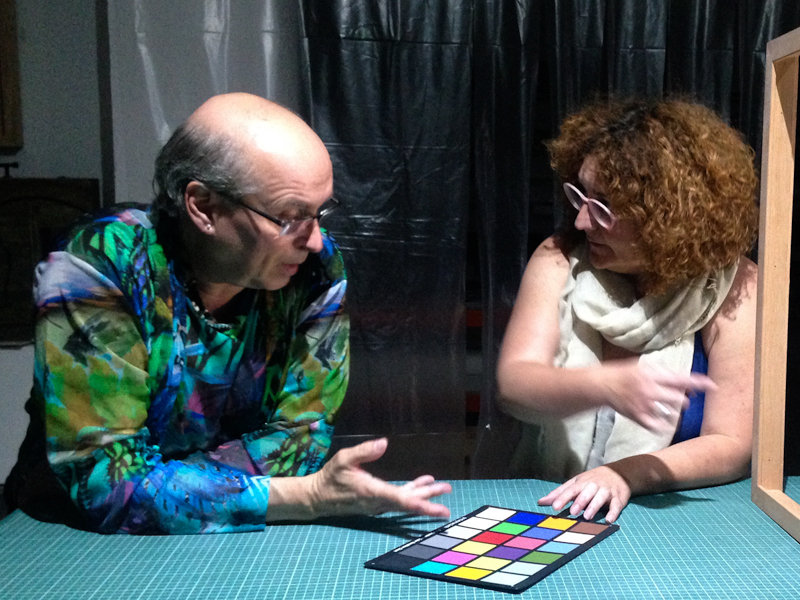 Viendo las fotos no se aprecia lo meticuloso y técnico que es el trabajo y el control tan preciso que impone.
Viendo las fotos no se aprecia lo meticuloso y técnico que es el trabajo y el control tan preciso que impone.
Aun así, dice que cada vez que empieza una colección no sabe lo que tiene que hacer exactamente, que aprende mucho, pero que generalmente lo que aprende no le vale para la siguiente; dice que si vas al límite nunca sabes lo suficiente.
Ver todo esto es muy interesante, pero poco o nada tiene que ver con la fotografía comercial. Es complicado hacer lo que hace, pero el resultado es muy impresionante.
Entiendo que no quiera hablar de técnica, es una pesadilla explicarlo y resumirlo.
Yo tampoco querría hacerle esa entrevista.”
You cannot appreciate how meticulous and technical the work is just by viewing the photos, neither can you appreciate the exact control it imposes.
Even so, he says that every time he starts a collection he does not really know exactly what he is going to do, he learns a lot, but generally what he learns is not valid for the next collection; he says that if you take things to the limit you never know enough.
Seeing all of this is very interesting, but little or nothing has it to do with commercial photography. It is complicated to do what he does, but the result is very impressive.
I understand why he does not want to talk about techniques, it is such a nightmare explaining and summarizing.
I would not want to do this interview either.”
Y ahora… una imagen terminada: «EL ESFERIPLANO»
And now… a finished image: «EL ESFERIPLANO»
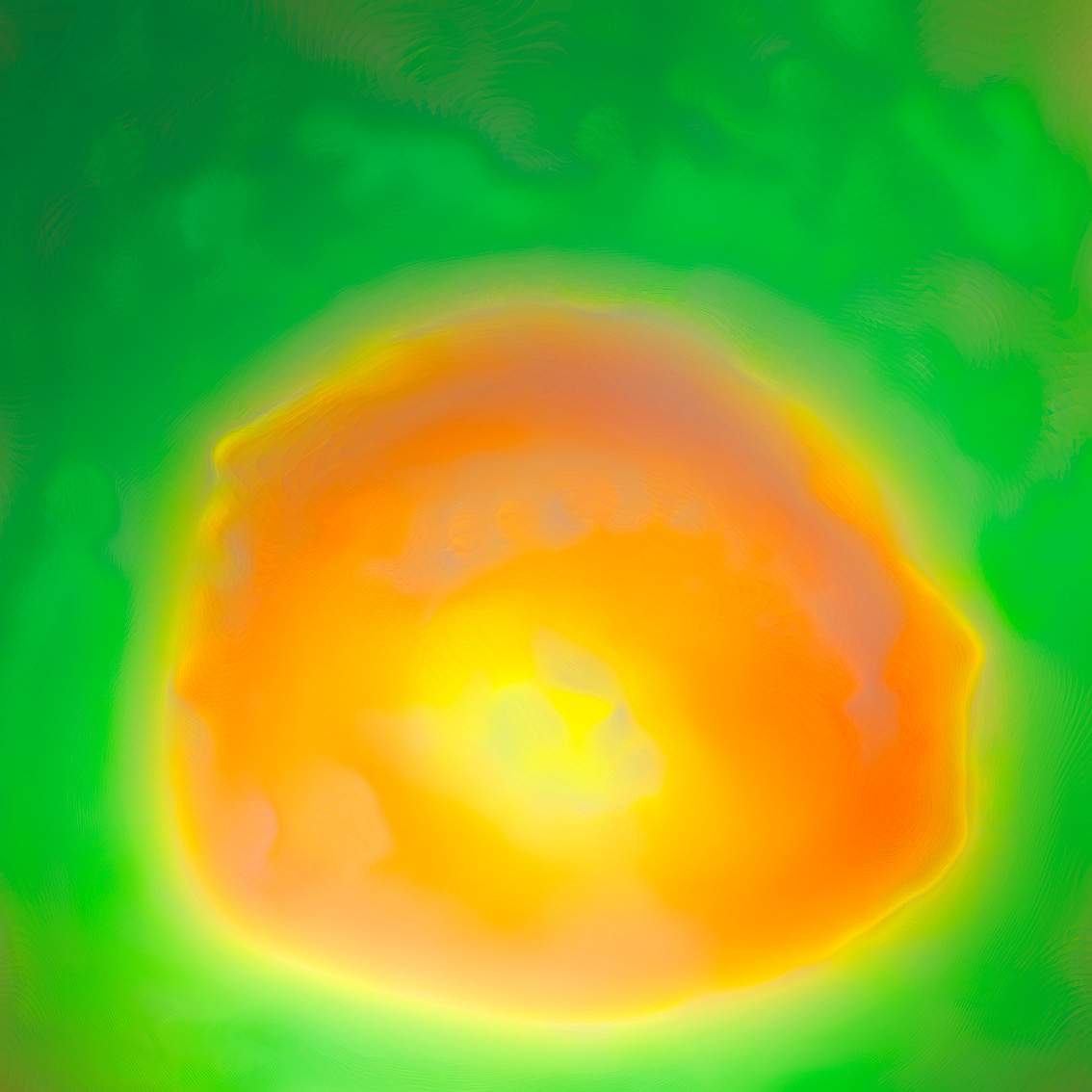
Translated to English by Sandra Crundwell.

